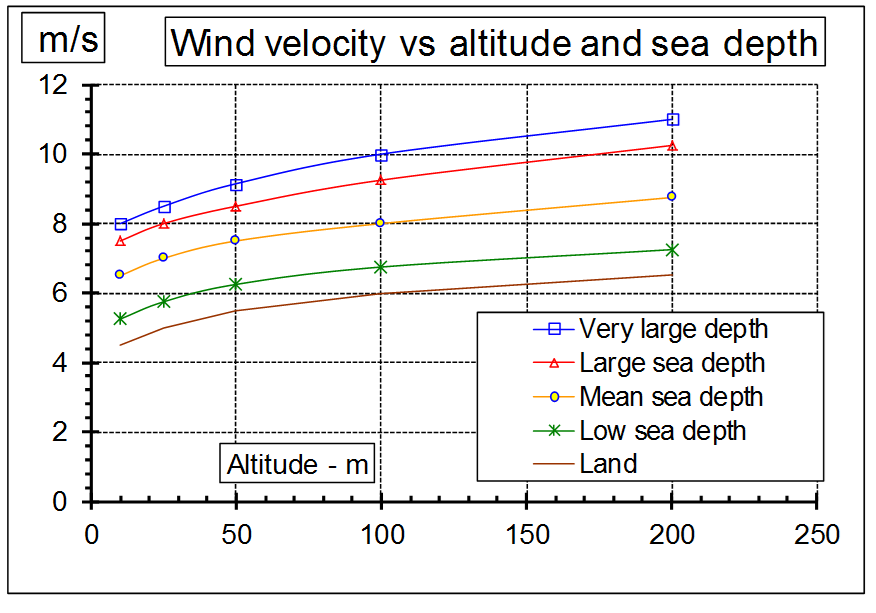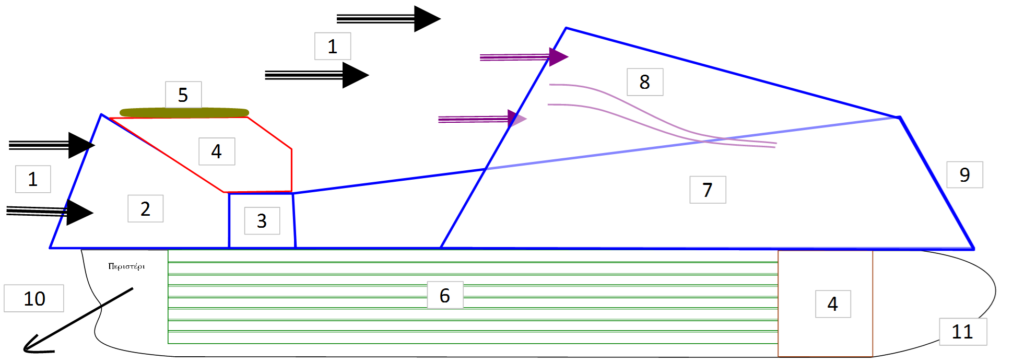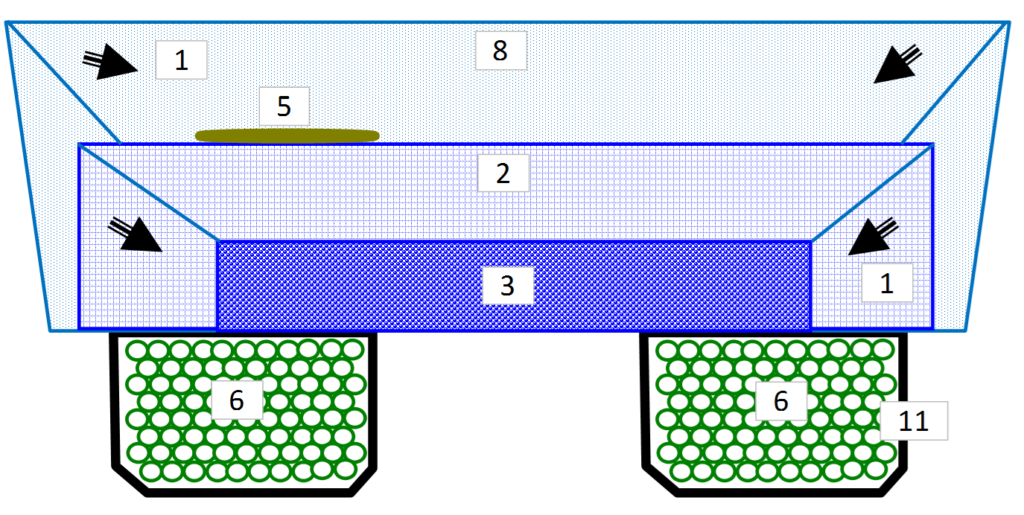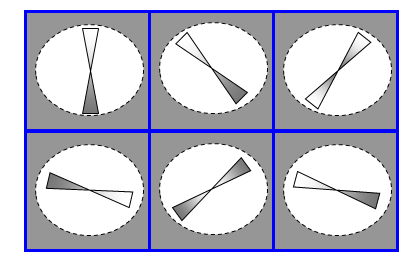Keywords: Wind concentrator multi-turbine sea barge hydrogen oxygen production air extraction altitude depth hull
Overview
This section describes a multi-stage wind turbine system mounted on a sea barge and provided upstream with an energy concentrator. This system is naturally oriented towards the wind direction given its anchoring feature. It has a high average efficiency taking into account the multiplicity of small wind turbines which can be individually started or stopped according to atmospheric conditions looking for an optimum operating condition at each turbine entrance. The wind mill system may also be mounted on two (or more) sea barges for handling a large windmill system (less height) and for increasing the storage capacity.
The benefit of a sea barge is that it may be installed at any place in the ocean disregarding the sea depth. This is particularly important considering that the wind velocity increases considerably with the sea depth up to a certain limit where the depth presents little impact on the wind velocity. The graph below indicates how the wind velocity increases with the altitude (elevation referred to sea level) and the sea depth.

Typical wind velocity magnitude versus altitude (refer to sea level) and sea depth. This graph indicates how important is the sea depth and to some extend the altitude.
_
Power supply, turbine operation and protection
It provides a large average power supply given its installation at sea at a relatively large distance from the coast where strong wind takes place and considering its specific design. It is suitable for operating in the most severe wind conditions due to the small size of individual wind turbines. It is also suitable for operating in low wind conditions with the highest efficiency due to the possibility to limit the number of turbines in operation and to concentrate the wind energy at optimum condition to the units left in operation.

Barge longitudinal cross section (from air entrance and exit) with 1: Wind; 2: Air inlet concentrator; 3: Individual turbines; 4: Process equipment; 5: Heliport; 6: Storage (H2&O2); 7: Turbine air exit; 8: Air ejector system; 9: All air exit; 10: Anchor; 11: Barge hull
_
The energy concentrator (2 on figures) is designed to provide a protection in case of extremely large winds with safety windows opening laterally. These windows provides three functions: to reduce the wind velocity on turbines in operation, to reduce the drag force on the wind system and to reduce the effort on the anchoring system.

Barge transversal cross section with 1: Wind; 2: Air inlet concentrator; 3: Individual turbines; 5: Heliport; 6: Storage (H2&O2); 8: Air ejector system; 11: Barge hull
_
The wind system unit comprises downstream the multi turbine set a device (8 on figures) allowing the entry of lateral air which permits to drive the air exiting the multi turbine set facilitating its entrainment at the outlet of the wind system unit. This phenomena may be called an air ejection.
This permits to absorb a large fraction of the kinetic energy available at the outlet section of the concentrator (turbine entrance – 3 on figures). In other words, it is not only the kinetic energy of the air passing through the air concentrator entrance which is converted into energy but the overall kinetic energy of the air passing through the overall assembly (including the air ejector system) which provides energy. This means that the area of the multi turbine system is a relatively small fraction of the total area entering the overall system.

Wind mill system made of a multitude of turbines which may be individually controlled: started, stopped and rotating speed adjusted according to the wind intensity
_
Several types of production
The energy provided by wind turbines can be converted into electrical energy with a cable connecting the barge to the shore or for the production of hydrogen and oxygen after electrolysis of water (fresh water stored on barge), the hydrogen and oxygen being stored on the barge either in high pressure tanks at ambient temperature or in atmospheric cryogenic tanks.
Sea barge operation and maintenance
Given the hull of the wind system, it may allow the landing of a helicopter (5 on figures). In addition, the barge can be used for a long time storage of hydrogen and oxygen considering the volume of the barge but also as a living quarter for maintenance operation. Several sea barges may be inter connected through electric cables in order to transfer the energy received from each satellite barge to the main barge producing hydrogen and oxygen reducing the overall cost unit of the multi barge system. For safety reasons, gas production and living quarter may be allocated to two different barges.